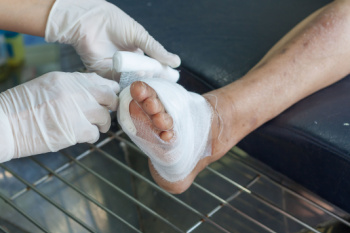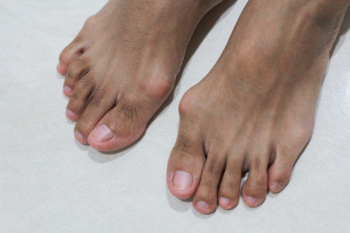
Diabetes can significantly impact the health of the feet, increasing the risk of nerve damage and poor circulation. Reduced sensation in the feet may make it difficult to detect minor injuries, which can develop into foot ulcers and serious infections. Decreased blood flow can further slow healing, leading to complications that may require advanced treatment, including surgery. Structural changes in the foot, such as hammertoes, can also increase pressure points, making the formation of ulcers more likely. A podiatrist plays an essential role in managing diabetic foot health by identifying potential risks, providing routine foot examinations, and treating any developing conditions before they become severe. Proper foot care, including wound management and wearing specialized footwear, can help protect against ulcers and infections. A podiatrist may also recommend solutions to relieve pressure on vulnerable areas and address foot deformities. If you are experiencing foot pain related to diabetes, it is suggested that you are under the care of a podiatrist for effective relief and management solutions.
Diabetic foot care is important in preventing foot ailments such as ulcers. If you are suffering from diabetes or have any other concerns about your feet, contact one of our podiatrists from Westside Podiatry Center, LLP. Our doctors can provide the care you need to keep you pain-free and on your feet.
Diabetic Foot Care
Diabetes affects millions of people every year. The condition can damage blood vessels in many parts of the body, especially the feet. Because of this, taking care of your feet is essential if you have diabetes, and having a podiatrist help monitor your foot health is highly recommended.
The Importance of Caring for Your Feet
- Routinely inspect your feet for bruises or sores.
- Wear socks that fit your feet comfortably.
- Wear comfortable shoes that provide adequate support.
Patients with diabetes should have their doctor monitor their blood levels, as blood sugar levels play such a huge role in diabetic care. Monitoring these levels on a regular basis is highly advised.
It is always best to inform your healthcare professional of any concerns you may have regarding your feet, especially for diabetic patients. Early treatment and routine foot examinations are keys to maintaining proper health, especially because severe complications can arise if proper treatment is not applied.
If you have any questions please feel free to contact one of our offices located in Liverpool, Camillus, Skaneateles, Oswego, and Cicero, NY . We offer the newest diagnostic and treatment technologies for all your foot and ankle needs.




